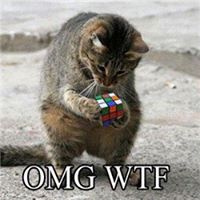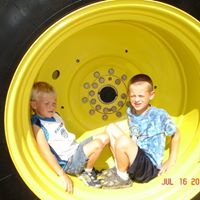Robert J Brush
age ~74
from Susquehanna, PA
- Also known as:
-
- Robert John Brush
- Roberta A Brush
- Robert J Bush
- Phone and address:
-
1080 Bethel Hill Rd, Susquehanna, PA 18847
570 727-2531
Robert Brush Phones & Addresses
- 1080 Bethel Hill Rd, Susquehanna, PA 18847 • 570 727-2531
- 15 Wilson Ave, Susquehanna, PA 18847
- Lanesboro, PA
Work
-
Company:Moser IP Law Group
-
Address:
Specialities
Patent Infringement • Patent Prosecution
License Records
Robert J Brush
Address:
Lanesboro, PA 18827
License #:
RN517698L - Expired
Category:
Nursing
Type:
Registered Nurse
Robert John Brush
Address:
Susquehanna, PA 18847
License #:
RN013043Y - Expired
Category:
Nursing
Type:
Graduate Registered Nurse Permit
Lawyers & Attorneys

Robert Brush - Lawyer
view sourceOffice:
Moser IP Law Group
Specialties:
Patent Infringement
Patent Prosecution
Patent Prosecution
ISLN:
915139574
Admitted:
2001
University:
Rutgers University, B.S., 1998
Law School:
Seton Hall University, J.D., 2001
Us Patents
-
Spring Loaded Anti-Rotation Device For Electrical Connectors
view source -
US Patent:42721440, Jun 9, 1981
-
Filed:Dec 18, 1979
-
Appl. No.:6/104993
-
Inventors:Robert W. Brush - Unadilla NY
Dee A. Werth - Nineveh NY
Alan L. Schildkraut - Sidney NY -
Assignee:The Bendix Corporation - Southfield MI
-
International Classification:H01R 13639
-
US Classification:339 89R
-
Abstract:An anti-rotation feature is disclosed for preventing inadvertent disconnection of electrical connector assemblies of the type including mating plug and receptacle shells positioned in mating relationship with a surrounding coupling nut which threadedly engages one of the members and axially engages the other to draw the same into mating relationship upon rotation of the coupling nut. An elongated rod or axle extends chordally across the interior bore of the coupling nut member, with an axially movable element positioned on the axle by a pair of centering springs. The movable element is in engagement with a series of serrations formed about the periphery of one of the electrical connector components so that the centering springs resist relative rotation between the coupling nut and connector component until the spring resistance is overcome to allow relative rotation between the coupling nut member and the connector components. The serration flank geometry is asymmetrical to enable easier rotation between the coupling nut member and connector components in the direction of rotation corresponding to coupling of the connector components. Different strength centering springs are also used in engagement on either side of the engagement element to also produce the difference in resistance to rotation.
-
Ball Loaded Anti-Decoupling Device For Electrical Connectors
view source -
US Patent:42576636, Mar 24, 1981
-
Filed:Dec 7, 1979
-
Appl. No.:6/101372
-
Inventors:Robert W. Brush - Unadilla NY
Dee A. Werth - Nineveh NY
Alan L. Schildkraut - Sidney NY -
Assignee:The Bendix Corporation - Southfield MI
-
International Classification:H01R 1362
-
US Classification:339 89M
-
Abstract:An anti-vibration arrangement for resisting unthreading rotation between a coupling nut and mated components is disclosed, consisting of a deflectable mandrel extending in a radial plane chordally across an interior bore formed in the coupling nut, which mandrel mounts a slidable ball. The mandrel passes adjacent an outer surface portion of one of the electrical connector components defining a clearance space of a smaller dimension than the ball, while the ball is axially positioned in frictional engagement with the surface portion on either side of the clearance space. Rotation of the nut is resisted only minimally in a direction tending to move the ball away from the clearance space while tending to be wedged by rotation in the opposite direction. On exertion of a turning force in the wedging direction sufficient to cause deflection of the mandrel, the ball passes through the clearance space which results in greatly reduced resistance to continued rotation in that direction enabling ready uncoupling of the connector elements.
-
Anti-Decoupling Mechanism For An Electrical Connector Assembly
view source -
US Patent:45882460, May 13, 1986
-
Filed:Feb 4, 1985
-
Appl. No.:6/698285
-
Inventors:Alan L. Schildkraut - Sidney NY
Robert W. Brush - Unadilla NY -
Assignee:Allied Corporation - Morristown NJ
-
International Classification:H01R 13623
-
US Classification:339 89R
-
Abstract:A spiral band (400) having a lock arm (420) for resisting rotation of a coupling nut (300) relative to a plug shell (100), coupling nut (300) including a radial flange (322) having a plurality of detents (340) disposed equiangularly therearound and spiral band (400) being tightly spiraled to interference fit an annular groove (110) of plug connector shell (100) and dome shaped to axially bias the plug shell (100) oppositely of the coupling nut (300), radial expansion of the spring band (400) relative to the plug shell by lock arm (420) allowing uncoupling rotation and radial contraction of spring band (400) followed by lateral deflection of the lock arm from engagement with the detent (340) allowing uncoupling rotation.
-
Coupling Nut For An Electrical Connector
view source -
US Patent:44575726, Jul 3, 1984
-
Filed:Sep 30, 1982
-
Appl. No.:6/431973
-
Inventors:Margaret J. Frazier - Sidney NY
Robert W. Brush - Unadilla NY -
Assignee:The Bendix Corporation - Southfield MI
-
International Classification:H01R 13629
-
US Classification:339 89M
-
Abstract:A coupling member (500) comprises outer and inner sleeves (410, 310) mounted for relative corotation about a connector shell (100) and about one another for rotational movement between locked and unlocked positions relative to a coil spring (322) carried by inner sleeve (310), the coil spring (322) being compressed radially inwardly by an inner wall (406) of outer sleeve (410) to drive medial tooth (318) of a spring beam (316) into a locked relation with ratchet teeth (138) disposed around the connector shell, rotation of outer sleeve (410) to a second position registering an undercut (408) in inner surface (406) with coil spring (322), whereby the coil spring expands into a relaxed position and means (422) for normally biasing the sleeves into the locked position.
-
Anti-Decoupling Device For An Electrical Connector
view source -
US Patent:45027480, Mar 5, 1985
-
Filed:Nov 21, 1983
-
Appl. No.:6/553914
-
Inventors:Robert W. Brush - Unadilla NY
Vincent A. Luca - Sidney NY
Eric F. Shepler - Bainbridge NY -
Assignee:Allied Corporation - Southfield MI
-
International Classification:H01R 13623
-
US Classification:339 89M
-
Abstract:This invention is an anti-decoupling mechanism for an electrical connector assembly of the type having two housings (20, 50) connected together by a coupling ring (30). The invention is characterized by an annular member (10) that has a plurality of slots (11) around the periphery thereof that engages the projection (41) on each spring (40) mounted within a coupling ring (30). The annular member (10) is radially expandable to increase its diameter in response to opposing axial forces applied by the housings (20, 50) as they are drawn together by the coupling ring (30). This anti-decoupling arrangement provides a first lower pressure against the spring (40) during the initial stage of the coupling cycle and a second higher pressure against the spring during the final stage of the coupling cycle thereby reducing the wear on the anti-decoupling mechanism an increasing its effectiveness.
-
Anti-Decoupling Mechanism For An Electrical Connector Assembly
view source -
US Patent:45250170, Jun 25, 1985
-
Filed:May 11, 1983
-
Appl. No.:6/493535
-
Inventors:Alan L. Schildkraut - Sidney NY
Robert W. Brush - Unadilla NY -
Assignee:Allied Corporation - Morristown NJ
-
International Classification:H01R 13623
-
US Classification:339 89M
-
Abstract:A spiral band (400) having a lock arm (420) for resisting rotation of a coupling nut (300) relative to a plug shell (100), coupling nut (300) including a radial flange (322) having a plurality of detents (340) disposed equiangularly therearound and spiral band (400) being tightly spiraled to interference fit an annular groove (110) of plug connector shell (100) and dome shaped to axially bias the plug shell (100) oppositely of the coupling nut (300), radial expansion of the spring band (400) relative to the plug shell by lock arm (420) allowing uncoupling rotation and radial contraction of spring band (400) followed by lateral deflection of the lock arm from engagement with the detent (340) allowing uncoupling rotation.
-
Method Of Making A Pin Type Electrical Connector Contact
view source -
US Patent:44345526, Mar 6, 1984
-
Filed:Mar 1, 1982
-
Appl. No.:6/353757
-
Inventors:Robert W. Brush - Unadilla NY
R. Amelia Piscitelli - Sidney NY -
Assignee:The Bendix Corporation - Southfield MI
-
International Classification:H01R 4300
-
US Classification:29876
-
Abstract:A two piece contact assembly characterized by a method of making the assembly by press fitting a stamped and formed inner sleeve (10) into a cold drawn tubular member (20) to provide an electrical contact having a seamless pin type contact area.
-
Electrical Connector Assembly Having An Anti-Decoupling Device
view source -
US Patent:44680775, Aug 28, 1984
-
Filed:Sep 30, 1982
-
Appl. No.:6/431994
-
Inventors:Robert W. Brush - Unadilla NY
Dee A. Werth - Afton NY -
Assignee:The Bendix Corporation - Southfield MI
-
International Classification:H01R 13629
-
US Classification:339 89M
-
Abstract:A plurality of longitudinally housed looped spring members (340) are pivotally supported by a wire (350) circumposed about a plurality of ratchet teeth (150) defining a contiguous succession of longitudinal peaks and valleys (154, 152) for interengagement, the spring members including a straight end portion (342) advanced around the peaks and valleys and a curved end portion (344) normally out of engagement with the ratchet teeth, the wire being supported in an annular groove (331) of a coupling nut (300) rotatably mounted to one shell (100) of an electrical connector assembly comprising a pair of shells (100, 200), the forward end face (222) of the second shell being drawn against the curved end portion (344) to drive the straight end portion (342) downwardly into the ratchet teeth when mating engagement has been achieved, the bias of the straight end portions (342) resisting rotation of the coupling nut.
Resumes

Robert Brush
view sourceLocation:
United States
Work:
James LaSala & Associates, LLP 2001 - 2005
designer
designer
Myspace
Classmates

Robert Brush
view sourceSchools:
Woodhaven High School Brownstown MI 1992-1996
Community:
Pam King, Catherine Lipscomb

Robert Brush
view sourceSchools:
Avon Upper Elementary School Avon IN 1981-1985
Community:
Julie Laycock, Wendi Hudson, Linda Bailey, Amy Cisneros, David Flowers

Robert Brush
view sourceSchools:
Bryant Elementary School Harvey IL 1945-1950
Community:
Melissa Dennis

Robert Brush
view sourceSchools:
Centerburg High School Centerburg OH 1988-1992
Community:
Ila Fawcett, James Bland

Robert Brush
view sourceSchools:
Rondout Valley High School Accord NY 1974-1978
Community:
Florie Fitzgerald, Tom Weber, Dawn Mapes, Colleen Cahill, Edward Weig, Michele Williams, Kelly Dumond, David Warg, Kathleen Donlin, Pam Chatham

Robert Brush | Earl L. Va...
view source
Robert Brush, Aberdeen Hi...
view source
Avon Upper Elementary Sch...
view sourceGraduates:
Robert Brush (1981-1985),
Julie Laycock (1971-1974),
Don Coonce (1984-1986),
Robert Parks (1973-1976)
Julie Laycock (1971-1974),
Don Coonce (1984-1986),
Robert Parks (1973-1976)

Robert Brush
view source
Robert Brush
view source
Robert Brush
view source
Robert John Brush
view source
Robert Brush
view source
Robert Wesley Brush
view source
Robert Brush
view source
Robert Brush
view sourceGoogleplus

Robert Brush

Robert Brush
Flickr
Youtube
Get Report for Robert J Brush from Susquehanna, PA, age ~74













